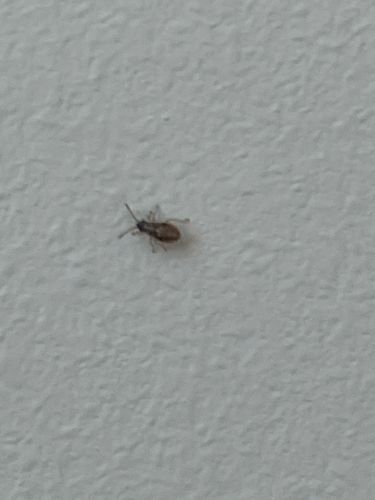Booklouse / Psocid
Scientific Name: Diverse, e.g., Liposcelis spp. (common indoor species)
Order & Family: Psocoptera / Liposcelididae (or other families within Psocoptera depending on species)
Size: 1-2 mm

Natural Habitat
Typically found in damp, warm, and undisturbed environments indoors, such as basements, bathrooms, storage areas, around windows, in books, old papers, stored foods, and wallpaper. Outdoors, they can be found under bark, on foliage, and in bird nests.
Diet & Feeding
Fungi, mold, mildew, microscopic algae, dead insects, starch in books, wallpaper paste, and other organic debris. They do not feed on human blood.
Behavior Patterns
Psocids are often found in groups. They are generally scavengers and are attracted to areas with high humidity where mold and mildew can grow. Many species are parthenogenetic, meaning the females can reproduce without mating. They are not known to bite humans or pets.
Risks & Benefits
Potential risks include being a nuisance pest indoors, especially in large numbers. While they don't cause structural damage, they can contaminate food products and damage books or papers by feeding on mold or starch. They are generally harmless to humans, not known to transmit diseases, and do not bite. Benefits are minimal to humans, but in natural environments, they contribute to the decomposition of organic matter.
Identified on: 8/30/2025